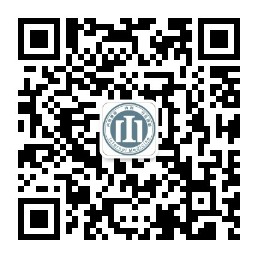目的 评价水痘减毒活疫苗(VarV)两针免疫程序、加强免疫的血清学效果及大样本的安全性。方法 于2016年7月至2021年7月,(1)选取武鸣区没有接种过VarV的健康儿童300人作为两针组,已接种过1剂VarV的健康儿童300人作为加强组,比较两针组接种前、接种第1剂及第2剂后42 d抗体滴度及2剂次免疫成功率,加强组接种前及接种后42 d抗体滴度,并记录其免疫成功率;观察两组接种后3 d内、接种后42 d内的不良反应;(2)招募横州市、桂平市、扶绥县及宁明县健康儿童53 626人,也分为两针组和加强组进行疫苗接种,记录其接种后30 d内的不良反应。结果 (1)武鸣区剔除脱落者后,实际纳入研究的受试儿童中,两针组为281人,加强组为297人,纳入疫苗安全性评价887剂次。两针组接种前抗体几何平均滴度(GMT,1∶)为19.95(95%CI :18.62~21.88), 接种第1剂后为186.20(95%CI:173.78~204.17), 接种第2剂后为501.18(95%CI :469.73~549.54),增长倍数分别为9.33倍(接种第1剂后/接种前)、25.12倍(接种第2剂后/接种前)、2.69倍(接种第2剂后/接种第1剂后),差异均有统计学意义(均P<0.05);两针组第1剂免疫成功率为86.83%,第2剂免疫成功率为98.93%,差异有统计学意义(P<0.05)。加强组接种前抗体GMT为44.66(95%CI:40.74~50.13),接种后为338.99(95%CI:309.02~371.54),增长7.58倍,差异有统计学意义(P<0.05);免疫成功率为100%。接种后3 d内,共发生不良反应14例,其中全身性反应(发热)8例(9.02‰),局部反应(接种部位红肿、皮疹等)6例(6.76‰)。接种后42 d内,共发生不良反应25例,其中全身性反应(发热)14例(15.78‰),局部反应(接种部位红肿、皮疹等)11例(12.40‰)。(2)横州市、桂平市、扶绥县及宁明县的受试儿童接种疫苗56 287剂次。接种后30 d内,共发生不良反应35例(6.22/万),其中全身性反应(发热)16例(2.84/万),局部反应(接种部位红肿、皮疹等)19例(3.38/万)。结论 VarV两针免疫程序和加强免疫均可提高保护效果,安全性较好,适合在适龄儿童中推广大规模免疫接种。
内科 页码:153-157
作者机构:广西壮族自治区疾病预防控制中心,南宁市 530021
基金信息:广西壮族自治区疾病预防控制中心科研课题(201509;202010) 通信作者:唐帅,秦卫文
- 中文简介
- 英文简介
- 参考文献
Objective To evaluate the serological efficacy and large-sample safety of a two-dose immunization schedule and booster immunization with Varicella attenuated live vaccine (VarV). Methods The following study was performed from July 2016 to July 2021. (1) 300 healthy children without prior VarV vaccination in Wuming were selected as the two-dose group, and 300 healthy children who had received one dose of VarV were selected as the booster group. Antibody titers before vaccination, 42 days after the first dose, and 42 days after the second dose, as well as the immunization success rates of the two doses, were compared in the two-dose group. Antibody titers before and 42 days after the vaccination were compared in the booster group, and the immunization success rate was recorded. Adverse reactions within 3 days and 42 days after vaccination were observed in both groups. (2) A total of 53,626 healthy children from Hengzhou, Guiping, Fusui, and Ningming were recruited and divided into two-dose and booster groups for vaccination, with adverse reactions recorded within 30 days after vaccination. Results (1) After excluding dropouts in Wuming, 281 children were actually included in the two-dose group and 297 in the booster group, with 887 vaccine doses evaluated for safety. In the two-dose group, the geometric mean titer (GMT, 1∶) of antibodies was 19.95 (95%CI: 18.62-21.88) before vaccination, 186.20 (95%CI: 173.78-204.17) after the first dose of vaccination, and 501.18 (95%CI: 469.73-549.54) after the second dose of vaccination; the increase folds were 9.33-fold (after the first dose of vaccination vs pre-vaccination), 25.12-fold (after the second dose of vaccination vs pre-vaccination), and 2.69-fold (after the second dose of vaccination vs after the first dose), with statistically significant differences (all P<0.05). The immunization success rate was 86.83% after the first dose of vaccination and 98.93% after the second dose of vaccination in the two-dose group, with a statistically significant difference (P<0.05). In the booster group, the pre-vaccination antibody GMT was 44.66 (95%CI: 40.74-50.13), increasing to 338.99 (95%CI: 309.02-371.54) after vaccination, representing a 7.58-fold increase, with a statistically significant difference (P<0.05); the immunization success rate was 100%. Within 3 days after vaccination, 14 adverse reactions occurred, including 8 systemic reactions (fever) (9.02‰) and 6 local reactions (redness/swelling at the injection site, rash, etc.) (6.76‰). Within 42 days after vaccination, 25 adverse reactions occurred, including 14 systemic reactions (fever) (15.78‰) and 11 local reactions (redness/swelling at the injection site, rash, etc.) (12.40‰). (2) A total of 56,287 vaccine doses were administered to children in Hengzhou, Guiping, Fusui, and Ningming. Within 30 days after vaccination, 35 adverse reactions (6.22 per 10,000) occurred, including 16 systemic reactions (fever) (2.84 per 10,000) and 19 local reactions (redness/swelling at the injection site, rash, etc.) (3.38 per 10,000). Conclusion Both the two-dose immunization schedule and booster immunization with VarV can improve protective efficacy with good safety, making them suitable for large-scale immunization in vaccination-aged children.
-
无




 注册
注册 忘记密码
忘记密码 忘记用户名
忘记用户名 专家账号密码找回
专家账号密码找回 下载
下载 收藏
收藏
